Latest NRAO News
News is managed by NRAO News & Public Information. Questions about News? Have a story to share? Want to interview a scientist or create new media about our telescopes?
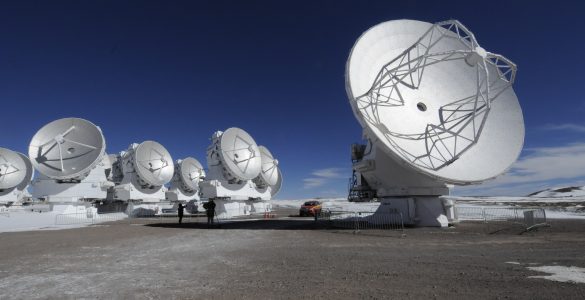
On October 29, 2022, the Atacama Large Millimeter/submillimeter Array (ALMA) suffered a cyberattack. We are working hard to resume observations before the end of the year.

In the center of the Milky Way there is a black hole more massive than 4 million Suns. It’s known as Sagittarius A*, or Sgr A*, and it’s hidden behind the dust of our galactic center. So how can astronomers see it?
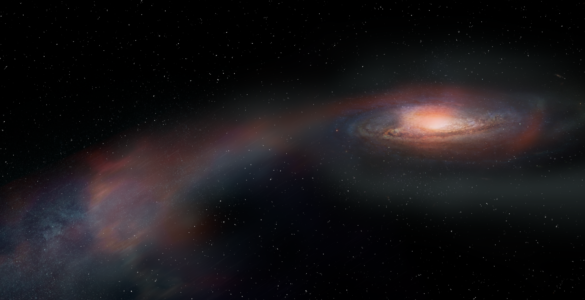
While observing a newly-dormant galaxy using the Atacama Large Millimeter/submillimeter Array (ALMA) and the Hubble Space Telescope (HST), scientists discovered that it had stopped forming stars not because it had used up all of its gas but because most of its star-forming fuel had been thrown out of the system as it merged with another galaxy. The result is a first for ALMA scientists. What’s more, if proven common, the results could change the way scientists think about galaxy mergers and deaths.

Ground-breaking 2014 HL Tau observational data from the Atacama Large Millimeter/submillimeter Array (ALMA) has been cited in more than 1,000 scientific studies in the past 7.5 years, aiding in major breakthroughs in scientists’ understanding of planet formation. The milestone comes as engineers at the U.S. National Science Foundation’s National Radio Astronomy Observatory (NRAO) embark on ambitious upgrades to the receivers responsible for the clarity of initial observations.

Scientists using the Atacama Large Millimeter/submillimeter Array (ALMA)— in which the National Radio Astronomy Observatory (NRAO) is a partner— to study planet formation have made the first-ever detection of gas in a circumplanetary disk. What’s more, the detection also suggests the presence of a very young exoplanet.
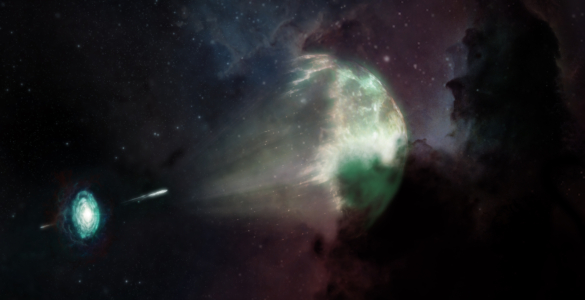
Scientists using the Atacama Large Millimeter/submillimeter Array (ALMA)— an international observatory co-operated by the US National Science Foundation’s National Radio Astronomy Observatory (NRAO)— have for the first time recorded millimeter-wavelength light from a fiery explosion caused by the merger of a neutron star with another star. The team also confirmed this flash of light to be one of the most energetic short-duration gamma-ray bursts ever observed, leaving behind one of the most luminous afterglows on record.
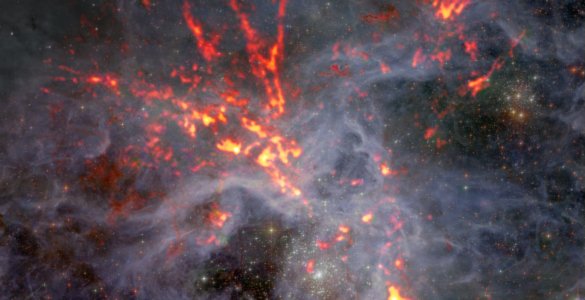
While using the Atacama Large Millimeter/submillimeter Array (ALMA) to observe large star-forming regions in the Large Magellanic Cloud (LMC), scientists discovered a turbulent push-and-pull dynamic in the star-forming region, 30 Doradus. Observations revealed that despite intense stellar feedback, gravity is shaping the molecular cloud, and against scientific odds, is driving the ongoing formation of young, massive stars.
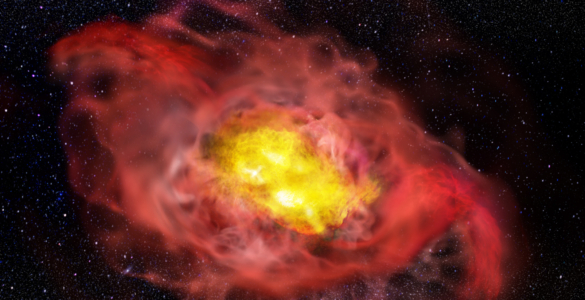
Scientists using the Atacama Large Millimeter/submillimeter Array (ALMA)— an international observatory co-operated by the US National Science Foundation’s National Radio Astronomy Observatory (NRAO)—have observed a significant amount of cold, neutral gas in the outer regions of the young galaxy A1689-zD1, as well as outflows of hot gas coming from the galaxy’s center. These results may shed light on a critical stage of galactic evolution for early galaxies, where young galaxies begin the transformation to be increasingly like their later, more structured cousins.
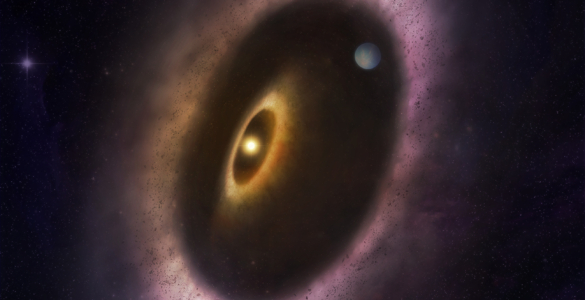
Using the Atacama Large Millimeter/submillimeter Array (ALMA), astronomers have imaged the debris disk of the nearby star HD 53143 at millimeter wavelengths for the first time, and it looks nothing like they expected. Based on early coronagraphic data, scientists expected ALMA to confirm the debris disk as a face-on ring peppered with clumps of dust. Instead, the observations took a surprise turn, revealing the most complicated and eccentric debris disk observed to date.
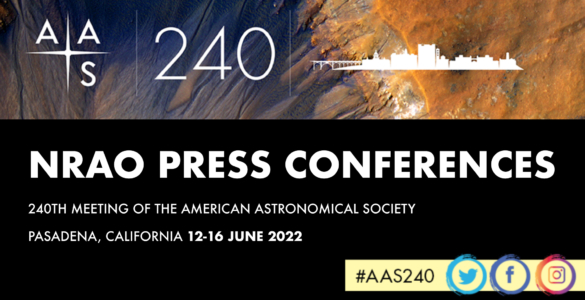
Seven new scientific results from the Atacama Large Millimeter/submillimeter Array (ALMA), the Very Large Array (VLA), and the Very Large Array Sky Survey (VLASS) will be revealed at multiple press conferences during the 240th meeting of the American Astronomical Society (AAS) between June 13-15, 2022 in Pasadena, California.





